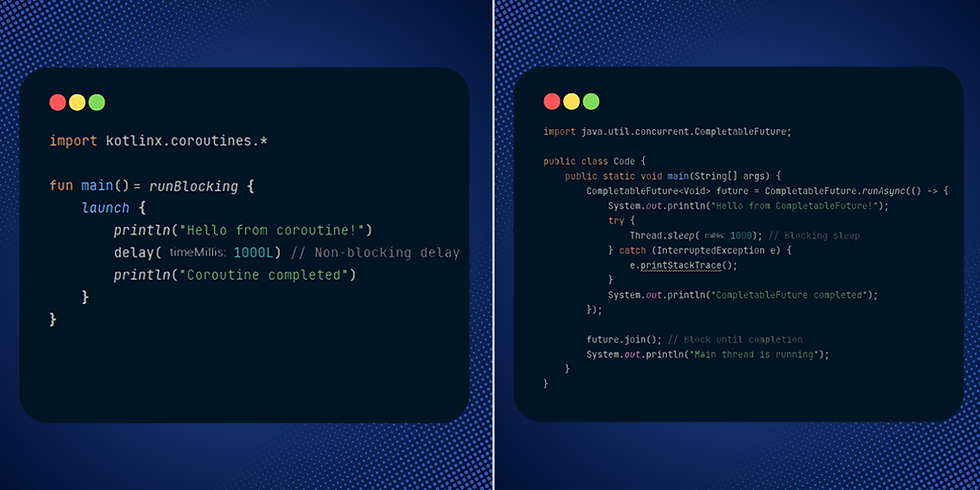Software Architecture: The Foundation of Successful Systems
- Thalles Vieira
- 30 de set. de 2024
- 4 min de leitura
Software architecture is the backbone that supports any system, from small applications to large-scale platforms. Just as a building needs a solid foundation to stand tall, software requires a robust architecture to ensure its efficiency, scalability, and resilience. In this article, we will explore what software architecture is, how it differs from design, and analyze key aspects such as performance, scalability, and resilience.

What is Software Architecture?
Software architecture is the organizational structure of a system, defining its main components and how they interact. It involves high-level decisions that not only influence how the software will be developed but also how it will perform over time. Imagine a civil engineer designing a building: they need to decide on the materials, foundations, and structural layout. Similarly, software architecture defines the components, frameworks, patterns, and technologies that will be used.
In the architectural phase, decisions are made about whether the system will be monolithic or microservices-based, how communication between components will work, and what the hosting environment will look like.
Architecture vs. Software Design
While architecture deals with high-level decisions, software design focuses on detailed choices about how each part of the system will be implemented. You could say that architecture defines the "what" and "how" in broad terms, while design dives deeper into how each specific component will be implemented.
For instance, architecture may define that the system will be divided into microservices, while design specifies how individual microservices will be implemented (programming language, libraries, and design patterns used).
Architectural Characteristics
Architectural characteristics define the quality of a system and can be divided into three main groups:
Operational Characteristics
These characteristics directly impact the system's operation and the end user.
Some examples include:
Performance: Does the system respond quickly to requests?
Availability: Is the system available when needed?
Security: Does the system protect data and information against threats?
Structural Characteristics
These define the system's internal organization and how it is composed.
Examples include:
Modularity: Is the system composed of independent and reusable modules?
Simplicity: Is the architecture easy to understand and maintain?
Cross-Cutting Characteristics
These characteristics impact multiple parts of the system.
Examples include:
Resilience: Can the system recover from failures?
Scalability: Can the system handle an increase in load and users?
Performance
Performance is one of the most important factors in software, measured by responsiveness and resource efficiency. Several subfactors affect performance:
Computational Capacity
The choice of servers and physical or cloud infrastructure has a major impact. Load balancing, memory allocation, and the number of processors directly influence how the system handles demand spikes.
Logic and Algorithms
Poorly optimized algorithms can slow a system, even with powerful infrastructure. Always choose algorithms suited to the problem's complexity. The runtime of an algorithm, whether O(n), O(n²), or worse, is critical for performance.
Framework Overhead
Frameworks can add overhead to software, especially when misused. Make sure to choose tools that meet your needs without overloading the system.
Use of Concurrency and Parallelism
Concurrent processes can significantly improve performance. In systems that perform multiple simultaneous operations, such as large-scale data processing, using concurrency (multithreading) or parallelism can speed up tasks.
Databases: Efficient Queries
An efficient database is crucial for performance. Use indexes on the right columns and optimized queries that only fetch necessary data, minimizing unnecessary reads.
Caching
Caching allows for the temporary storage of data to avoid repeated database queries, speeding up response times. Tools like Redis or Memcached are commonly used for this purpose.
Scalability
Scalability is a system’s ability to grow as demand increases.
There are two main types of scalability:
Vertical Scalability: Adding more resources to a single server, for example, more memory or CPU.
Horizontal Scalability: Adding more servers to distribute the workload.
In modern architectures, especially with the rise of cloud computing, horizontal scalability has become the standard. The advantage is that you can add or remove servers as needed without altering the infrastructure.
A practical example would be an e-commerce site. During a promotion, the number of users grows exponentially. A scalable system can handle this increase by temporarily adding more servers, ensuring a smooth user experience.
Resilience
Resilience is the ability of a system to handle failures without interrupting its overall functioning. No one wants their system to completely crash when a small part fails. Some key principles of resilience include:
Fault Tolerance
Resilient architectures are designed to isolate failures and prevent them from spreading. For example, in microservices systems, if one service fails, the others continue functioning.
Retry and Retry Logic
In cases of network failure or service unavailability, it is possible to retry the operation. Tools like Circuit Breaker (a design pattern) help prevent a local failure from affecting the entire system.
Fast Recovery
If the system experiences a failure, it should recover quickly, whether through automatic backups, failover (when another server takes control), or automatic service restarts.
Conclusion
Software architecture is one of the key pillars for the success of any project, determining how the system will be built, how it will operate, and whether it can grow and handle failures. Understanding different aspects of architecture, from performance to resilience, is crucial to ensuring that software is efficient, scalable, and reliable in any scenario. When building your next system, carefully consider all these characteristics and how they apply to your project’s specific needs.




Comentários